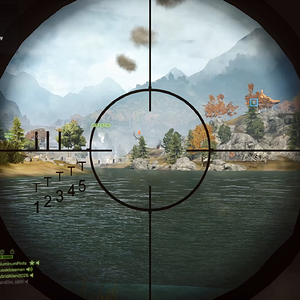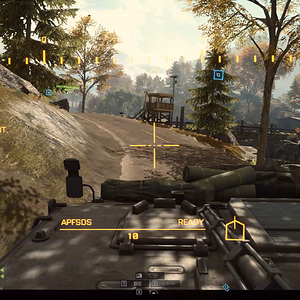U
/u/katisattva
Hello!
Hoping to hear from others who have been through a soft tissue sarcoma or fibrosarcoma diagnosis and treatment journey with their cats. Here's a brief overview and then I'm also going to copy/paste some info from the pathology report in case anyone has knowledge/insight into that.
November 2023- noticed a lump on our cat, Buddha's, left hip. Popped up quickly and grew fast over 2 weeks, so vet removed it. The mass was attached to his abdominal wall muscle, so required some excision of muscle tissue too. Got clean margins and sent sample to pathology. Pathology confirmed clean margins and gave diagnosis of fibrosarcoma. Buddha was an ex street cat (also FIV+) who had a lot of scar tissue from fights, so the vet said she thinks it was likely related to trauma to his skin/tissue from fighting that triggered the fibrosarcoma, similar to injection site sarcomas. Advice was just to watch him for new lumps, but he had no other signs of cancer or metastasis. He recovered quickly from the surgery and was back to normal.
April 2024 (last week)- noticed another lump, in almost the exact same location as the first but on his right hip. Knowing how quickly the other one grew the vet immediately decided to remove it instead of monitor the growth. Again she felt like she got clean margins and this lump was a little smaller, but also attached to abdominal wall muscle. Sent to pathology again. Results came back from pathology yesterday- this mass had more lymphocyte activity than the first one, and they also found microscopic nodules in the margins, so concern that they didn't get it all. This pathology report gave a more general diagnosis of soft tissue sarcoma and said it could be fibrosarcoma but the high lymphocyte activity suggests possible lymphosarcoma. His lymph nodes were normal on exam.
Our vet is suggesting a consult with an oncologist, which we will likely do, to determine a more accurate diagnosis, grade, and prognosis and treatment plan. Our vet feels that prognosis is likely not great since the second mass popped up less than 6 months later and had greater lymphocyte activity which suggest higher risk for metastasis and aggressive nature. We are very tight financially at the moment and I don't think we could afford chemo/radiation treatment. Alternate plan is to just keep monitoring him, removing any more lumps that are removable, and trying to boost his immune system as much as possible. So we are just really not sure how to proceed and hoping for some insight from others who have had similar diagnosis and treatment plans that were helpful in prolonging life. Thanks!
Here are the descriptions from the pathology reports:
From first mass in November 2023- "The mass appears completely excised and is approximately 2 mm from the cut deep margins. Of note, the trimming notes indicated that only blue and green markings were evident at the time of trimming; the other color may have washed off. A poorly demarcated mass is located in the panniculus. The mass is composed of interlacing streams and bundles of spindle cells that are supported by a collagenous stroma. The spindle cells have indistinct cell borders, scant to small amounts of acidophilic cytoplasm, and one elongated nucleus that contains one nucleolus and/or clumped chromatin. The cells exhibit moderate atypia and there are 9 mitotic figures per 10 high-power fields. Scattered lymphocytes and plasma cells are located throughout the mass. A lymphoid nodule is located subjacent to the mass; the nodule is within normal limits. Blood vessels throughout the panniculus are multifocally cuffed low numbers of mononuclear inflammatory cells."
From second mass last week- "Differentials for this mass include fibrosarcoma or possible T cell rich B cell lymphosarcoma. In some nodules the spindle cell population is the dominant population and in other nodules the lymphocyte population is more prominent. Lymphocytic inflammation can be prominent in fibrosarcomas. The presence of a large number of heterogenous lymphocytes with B cells approximately 40% of the population as well as multinucleated giant cells was justification for including T cell rich B cell lymphosarcoma as a possible differential. However, this type of lymphosarcoma is rare in cats and reports in the literature describe the typical presentation as a single enlarged lymph node in the neck (which is not the case here). T cell rich B cell lymphosarcoma can also present clinically as multicentric masses across multiple organs.
Subcutis (right flank per history): Throughout the subcutis are variably sized nodular masses that are infiltrative in nature with occasional separation of myofibers. Nodules are composed of varying numbers of streams of spindle cells and lymphocytes (small T and large B cells). In some nodules spindle cells are more prominent and others the lymphocytes cell population is more numerous. Spindle cells have indistinct cell borders, small amounts of acidophilic cytoplasm and oval to elongated nuclei with clumped chromatin of occasional prominent nucleoli. Occasional multinucleated giant cells are interspersed within the nodules. Mitotic count is 6 per 10 400x hpf. Multifocally, nodular masses abut specimen margins."
submitted by /u/katisattva
[link] [comments]
Continue reading...
Hoping to hear from others who have been through a soft tissue sarcoma or fibrosarcoma diagnosis and treatment journey with their cats. Here's a brief overview and then I'm also going to copy/paste some info from the pathology report in case anyone has knowledge/insight into that.
November 2023- noticed a lump on our cat, Buddha's, left hip. Popped up quickly and grew fast over 2 weeks, so vet removed it. The mass was attached to his abdominal wall muscle, so required some excision of muscle tissue too. Got clean margins and sent sample to pathology. Pathology confirmed clean margins and gave diagnosis of fibrosarcoma. Buddha was an ex street cat (also FIV+) who had a lot of scar tissue from fights, so the vet said she thinks it was likely related to trauma to his skin/tissue from fighting that triggered the fibrosarcoma, similar to injection site sarcomas. Advice was just to watch him for new lumps, but he had no other signs of cancer or metastasis. He recovered quickly from the surgery and was back to normal.
April 2024 (last week)- noticed another lump, in almost the exact same location as the first but on his right hip. Knowing how quickly the other one grew the vet immediately decided to remove it instead of monitor the growth. Again she felt like she got clean margins and this lump was a little smaller, but also attached to abdominal wall muscle. Sent to pathology again. Results came back from pathology yesterday- this mass had more lymphocyte activity than the first one, and they also found microscopic nodules in the margins, so concern that they didn't get it all. This pathology report gave a more general diagnosis of soft tissue sarcoma and said it could be fibrosarcoma but the high lymphocyte activity suggests possible lymphosarcoma. His lymph nodes were normal on exam.
Our vet is suggesting a consult with an oncologist, which we will likely do, to determine a more accurate diagnosis, grade, and prognosis and treatment plan. Our vet feels that prognosis is likely not great since the second mass popped up less than 6 months later and had greater lymphocyte activity which suggest higher risk for metastasis and aggressive nature. We are very tight financially at the moment and I don't think we could afford chemo/radiation treatment. Alternate plan is to just keep monitoring him, removing any more lumps that are removable, and trying to boost his immune system as much as possible. So we are just really not sure how to proceed and hoping for some insight from others who have had similar diagnosis and treatment plans that were helpful in prolonging life. Thanks!
Here are the descriptions from the pathology reports:
From first mass in November 2023- "The mass appears completely excised and is approximately 2 mm from the cut deep margins. Of note, the trimming notes indicated that only blue and green markings were evident at the time of trimming; the other color may have washed off. A poorly demarcated mass is located in the panniculus. The mass is composed of interlacing streams and bundles of spindle cells that are supported by a collagenous stroma. The spindle cells have indistinct cell borders, scant to small amounts of acidophilic cytoplasm, and one elongated nucleus that contains one nucleolus and/or clumped chromatin. The cells exhibit moderate atypia and there are 9 mitotic figures per 10 high-power fields. Scattered lymphocytes and plasma cells are located throughout the mass. A lymphoid nodule is located subjacent to the mass; the nodule is within normal limits. Blood vessels throughout the panniculus are multifocally cuffed low numbers of mononuclear inflammatory cells."
From second mass last week- "Differentials for this mass include fibrosarcoma or possible T cell rich B cell lymphosarcoma. In some nodules the spindle cell population is the dominant population and in other nodules the lymphocyte population is more prominent. Lymphocytic inflammation can be prominent in fibrosarcomas. The presence of a large number of heterogenous lymphocytes with B cells approximately 40% of the population as well as multinucleated giant cells was justification for including T cell rich B cell lymphosarcoma as a possible differential. However, this type of lymphosarcoma is rare in cats and reports in the literature describe the typical presentation as a single enlarged lymph node in the neck (which is not the case here). T cell rich B cell lymphosarcoma can also present clinically as multicentric masses across multiple organs.
Subcutis (right flank per history): Throughout the subcutis are variably sized nodular masses that are infiltrative in nature with occasional separation of myofibers. Nodules are composed of varying numbers of streams of spindle cells and lymphocytes (small T and large B cells). In some nodules spindle cells are more prominent and others the lymphocytes cell population is more numerous. Spindle cells have indistinct cell borders, small amounts of acidophilic cytoplasm and oval to elongated nuclei with clumped chromatin of occasional prominent nucleoli. Occasional multinucleated giant cells are interspersed within the nodules. Mitotic count is 6 per 10 400x hpf. Multifocally, nodular masses abut specimen margins."
submitted by /u/katisattva
[link] [comments]
Continue reading...







